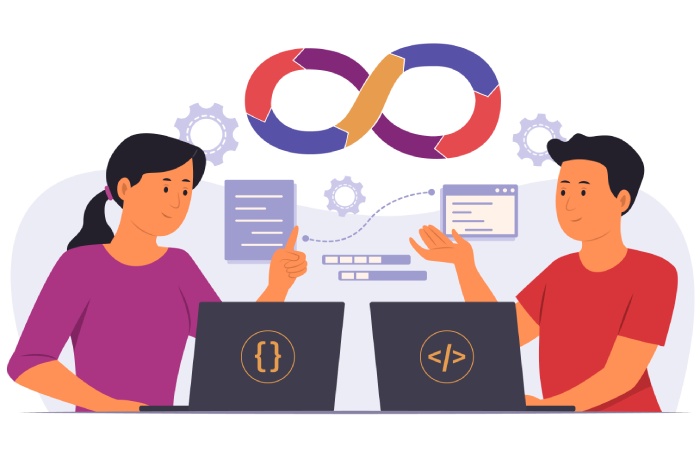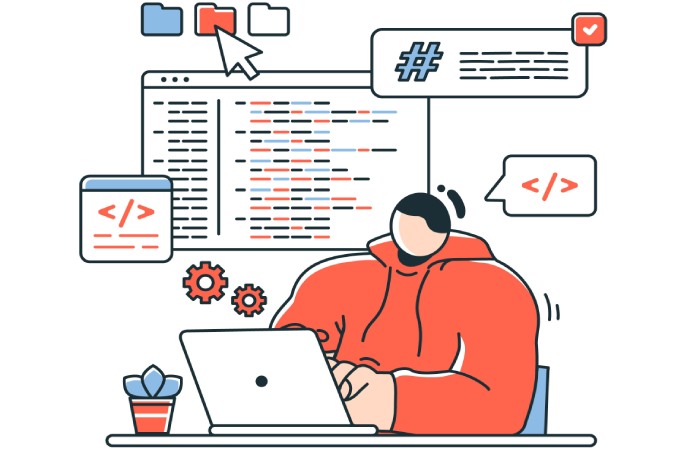As technology continues to advance and evolve, web developers should stay abreast of the latest trends to remain competitive. Two popular programming languages used for developing websites are Golang and Laravel, but which one is better? This article will explore the differences between these two technologies and help you decide which one is best suited for your project.
We’ll examine their features, performance capabilities, scalability options, security measures, cost-effectiveness, ease of use, and more. By comparing each framework’s strengths and weaknesses side by side we can gain a clearer understanding of how they stack up against each other in terms of overall quality. Whether you’re working on a small personal website or a large enterprise system, this comparison guide will help you find the right solution for your needs.
Golang vs Laravel: Overview
Golang (or Go) and Laravel are two of the most popular web application frameworks used today. As such, it can be difficult to decide which technology is best for your development project. Both offer a wide range of advantages and disadvantages depending on the particular situation.
Golang
Golang is a compiled, statically typed, and open-source programming language created by Google in 2009. Go has an easy-to-learn syntax and provides excellent performance due to its class of compile-time optimizations. It also integrates well with other languages and technologies, making Golang great for complex projects involving multiple languages. If you’re working on such performance-critical applications, you should hire Go developers to confidently manage concurrency, optimize performance, and build scalable architecture.
Golang also offers many features that make working with large projects easier, such as garbage collection and built-in concurrency support. In terms of performance, Go is known to be fast and efficient. It can compile programs quickly and its memory management system helps keep the code running smoothly.
Laravel
Laravel is a PHP framework that was developed in 2011 and has since become one of the most popular frameworks for web development. It’s easy to learn, provides powerful features such as database migrations and Eloquent ORM, and is actively maintained by an open-source community of developers.
One major advantage of Laravel is its large library of packages, which allows you to quickly add functionality to your application. Furthermore, Laravel’s Blade templating engine makes creating dynamic web pages easier than ever before. There are many development companies today such as https://lovata.com/laravel-development-company.html that can help your business to develop projects using Laravel.
Golang: Pros and Cons
Golang is an open-source programming language created by Google. It has quickly become a popular choice for software development due to its power, speed, and robustness. Golang also offers strong security features, making it ideal for creating secure applications. The pros of Golang are as follows:
- Fast compilation. Golang’s compilation process is approximately 10 times faster than Java and C++, making it a great choice for quickly building software applications.
- Easy to learn. Golang was designed for simplicity, which makes it easy to learn for novice developers.
- Robust type safety. Golang uses an advanced type system that prevents the use of weakly typed data structures, helping to prevent bugs at compile time.
- Good support. Golang is widely supported by Google and other tech companies, meaning you’re likely to find help if you run into any issues.
There are several cons of Goland it is worth paying attention to:
- Limited libraries. The number of available libraries for Golang is still relatively small compared to other languages such as Java or Python.
- Relatively new. While Golang has been around for some time, it’s still in its infancy compared to other languages such as Java and C++. This could mean that the language is not quite as mature as those other options.
- Steep learning curve. While Golang is fairly easy to learn, it is still a complex language and can take some time to master. If you’re just starting with programming, it may be worth learning another language before tackling Golang.
Laravel: Pros and Cons
If you are looking for a sturdy and secure web development framework, then Laravel is the perfect solution. It has several advantages over other frameworks:
- Easy to learn and use. Laravel is known for its easy-to-learn syntax. It provides a wide range of powerful tools to help developers quickly build robust web applications.
- Highly customizable. With a huge selection of plugins, libraries, and packages available, you can tailor your application to meet the needs of your project.
- Supports multiple platforms. Laravel is compatible with numerous databases and web servers, making it easy to deploy applications across multiple platforms.
- Excellent security features. With built-in authentication, authorization, encryption, and other security measures, Laravel provides an extra layer of protection for your web application.
As for Laravel’s cons, there are just some of them:
- High resource requirements. Laravel is a powerful framework, but it has high resource requirements. Depending on the size and complexity of your application, you may need to invest in more memory or processing power to run it.
- Limited scalability. Although Laravel can handle large applications, it is not as scalable as other frameworks such as Ruby on Rails.
- Lack of documentation. The Laravel community is growing, but it still lacks extensive documentation. This can make it difficult for new developers to find the information they need to get started.
Final Words
In conclusion, both Golang and Laravel are great tools for developing web applications. While they have different strengths and weaknesses, it ultimately comes down to your project’s needs when deciding which one is the best option for you. If you need a fast application with robust security features, then Golang may be the right choice.
On the other hand, if you want an easy-to-use framework that allows more flexibility in design and development, then Laravel might be better suited to your needs. Whichever tool you choose, make sure that it meets all of your requirements before making any decisions about implementation or deployment.


